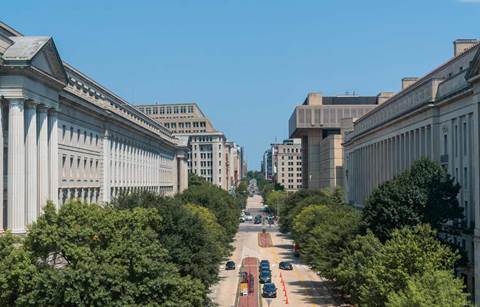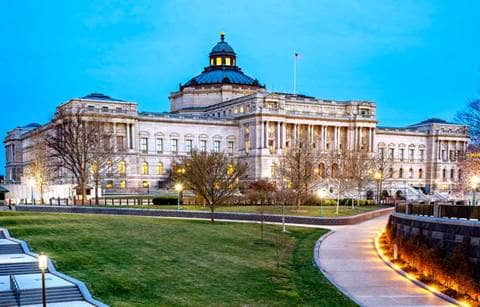The government shutdown is the main policy topic as the fall season unfolds. Extended tax filing deadlines passed without interruption, but the prospect of an extended shutdown portends operational challenges at the Internal Revenue Service (IRS). The shutdown is also expected to impact the development of technical guidance implementing the One, Big, Beautiful Bill (OBBB). However, the IRS and Treasury Department have published several important pieces of guidance in recent weeks and months. The fall is also a great time to revisit tax-planning opportunities following the enactment of the OBBB. One specific topic of note is the question of tax entity choice. The OBBB didn’t dramatically reshape that question, but important changes may favor the corporate form in some cases.
Read on for a round-up on some of the most significant recent tax policy developments.
The government shuts down
A government shutdown was long considered a possibility as events unfolded in Washington, DC over the summer. The likelihood of such an event further escalated as lawmakers returned after Labor Day without a clear path to a budget deal. With negotiations during September yielding little progress, the shutdown began on October 1. Many questions now exist ranging from the length of the shutdown to the downstream impacts that will result. From a tax lens, the most important considerations are the impacts on the IRS and potential tax legislation.
Treasury and the IRS: Funding, priorities, and predictability
The IRS was already in a state of flux prior to the shutdown. Roughly a quarter of the IRS’ workforce departed in the last six or so months. As the shutdown extended past the first five days, the IRS announced plans to furlough almost half of its employees. Further cuts to staffing may be anticipated depending on the length of the shutdown. In any event, it’s clear that the shutdown, furlough, and staffing changes will have an impact on operations within the IRS. Fortunately, the majority of extended tax filing dates have passed without interruption. So, the main concerns are the impact, if any, of the shutdown on refund processing, exams, and planning for the 2026 tax filing season.
The shutdown will undoubtedly impact the development and publication of guidance to implement the OBBB in at least some manner. The degree of disruption is the primary question. As described in greater detail below, important guidance packages have already been published by the IRS and Treasury Department. However, more complex sets of guidance will likely take months to complete. In the interim, taxpayers will need to evaluate tax-planning opportunities prior to year-end based on the existing guidance while monitoring new publications.
What’s on tap for tax?
A key issue leading to the shutdown was the extension of enhanced premium tax credits, which are set to expire at the end of 2025. Such credits, introduced as part of the Affordable Care Act (ACA), provide financial support for healthcare coverage. The Congressional Budget Office has estimated that millions of individuals could lose coverage if the credits are not extended. However, members of Congress hold differing views as to whether such credits should be extended, the degree of support to be provided, and the length of time for an extension. Resolution of this matter is expected to be complicated as the end of 2025 approaches.
Speaker of the House Mike Johnson has previously stated that he would like to see another reconciliation package done this fall to address matters excluded from the OBBB. However, the prospects for such a package being completed this year diminish by the day as the shutdown lingers and legislative friction increases.
Beyond spending, House Ways and Means chair Jason Smith has signaled his hopes for a bipartisan tax, trade, and healthcare package by the end of the year. This could include a variety of tax policy measures. Smith supports an increase to the qualified business income deduction (QBID) under Section 199A. The OBBB permanently extended QBID but left its percentage unchanged. Other tax provisions (e.g., the Work Opportunity Tax Credit) are set to expire and might be extended before the end of the year. Looking ahead, a bipartisan tax extenders package will likely linger until later in the year, if it’s to be completed at all.
OBBB guidance begins to emerge
The completion of substantial tax legislation triggers a period during which a corresponding volume of technical guidance is released. While the OBBB was completed in early July, the transition rules and interpretive guidance have only recently begun to emerge. Much more guidance will be needed in the coming months, especially when looking ahead to the looming tax filing season in early 2026. Here’s a quick recap of the latest guidance:
Section 174 transition rules released ahead of extended due dates
The restoration of domestic research and experimentation (R&E) expense deductions was one of the most significant business tax changes included in the OBBB. Importantly, Congress provided transition relief to release previously capitalized and unamortized domestic R&E deductions for amounts that had been incurred in 2022 through 2024. However, questions about the process of implementing such rules were raised immediately following enactment. In that respect, guidance was needed both about technical points as well as procedural steps (e.g., tax return statements and disclosures).
The IRS addressed the myriad technical and procedural matters in the form of Rev. Proc. 2025-28, which was released on Aug. 28, 2025. A detailed analysis of that guidance is available, with an emphasis on actions to release deductions in 2024 and prior years. While the option to fully release deductions in 2024 via method change closed with the passage of the September 15 and October 15 deadlines, other opportunities remain available. Looking ahead, taxpayers should carefully consider the timing options available for domestic R&E deductions and their interaction with other business tax rules, such as the Section 163(j) business interest expense limitation.
No tax provisions
A signature aspect of the OBBB was the creation of new deductions to alleviate taxation of tips, overtime pay, Social Security income, and auto loans. Those provisions were applied retroactively back to the beginning of 2025. However, questions were immediately raised about the implementation of such rules, including their coordination with employer payroll filings and withholdings. On August 7, the IRS announced that it had chosen not to provide updated withholding tables to reflect the new deductions for 2025. The IRS said the delay was needed to allow it, businesses, and tax practitioners more time to come to terms with the OBBB. Despite that announcement, employees remain eligible to update Form W-4 to adjust their individual withholdings. Otherwise, employees will ultimately recognize the tax benefit of the new deductions when filing their tax returns for 2025 next spring.
From a technical perspective, the no tax on tips deduction requires implementing guidance to clarifying qualifying occupations and establish guardrails against abuse. The Treasury Department took the first step in that endeavor by publishing proposed regulations on September 19. Those regulations would both define the list of qualifying occupations eligible for the deduction and clarify the concept of qualifying tips. A limited, 30-day comment period was established, so final regulations are likely to follow later this year or at the beginning of 2026.
Inflation Reduction Act tax credits
The termination of tax credits related to electric vehicles, energy-efficient improvements, and certain forms of renewable energy were included in the OBBB on policy grounds and as a potential pay-for to offset new tax cuts. That said, the pathway to credit termination isn’t exactly simple when considering the challenging transition rules for things like solar and wind projects.
Fact Sheet 2025-05 was published on August 21 to implement the termination of credits for electric vehicles (EVs) and residential improvements. Much of that guidance was expected with restatements of simple termination dates provided in the statute. However, the interpretation of the term “acquired” with respect to EVs was notable given the invitation for delayed delivery and placed in service dates. As discussed in greater depth, it’s expected that many taxpayers will have taken action before the end of September to perfect their future eligibility to claim EV credits.
Opportunity zones
Tax benefits associated with investments in opportunity zones have been available since 2018 following the creation of that program by the Tax Cuts and Jobs Act. Such rules allow eligible taxpayers to defer the tax on capital gains by investing in funds and receive tax basis step-ups following satisfaction of the requisite holding period. Those rules, OZ 1.0, were set to transition at the end of 2026, with no new investments being eligible and termination of the gain deferral period.
The OBBB established a new set of opportunity zone rules, OZ 2.0, which take effect for new investments beginning in 2027. There are several important distinctions between OZ 1.0 and OZ 2.0, but an important one involves increased benefits for investments in rural areas. Recently, Notice 2025-50 was provided to clarify definitional matters for the rural aspects of OZ 2.0.
Remittance transfers
The OBBB also established a new 1% excise tax applicable to certain remittance transfers (cross-border financial transactions). Such tax wasn’t implemented immediately and was instead deferred until 2026. However, the IRS published Notice 2025-55 on October 7 to provide limited penalty relief for tax deposits during the first three quarters of 2026. In announcing that notice, the IRS acknowledged the likelihood of challenges in implementing this tax, so a limited period of relief was determined to be in the interest of sound tax administration. Notably, this relief doesn’t defer applicability of the 1% excise tax but instead focuses on penalty relief for transfer providers that fail to deposit appropriate amounts.
Entity choice revisited
Significant changes to the Tax Code invite questions about the optimal form for the structuring of business entities. The central question in that respect is whether it’s more beneficial to structure a business as a C corporation or as a pass-through entity. In 2017, the enactment of the Tax Cuts and Jobs Act (TCJA) reinvigorated tax entity classification discussions due to the permanent reduction in the corporate tax rate from 35% to 21%. More recently, the OBBB omitted further changes to the corporate tax rate but made permanent a variety of business-related deductions, including the qualified business income deduction (QBID) under Section 199A.
The basics of entity choice
Businesses considering a change to their tax entity classification must weigh several critical factors while also projecting the likelihood of future changes to tax rules.
- Flexibility to change (or lack thereof): Converting a pass-through entity into a C corporation is a substantially simpler process than the reverse scenario. Tax elections, state law conversions, or merger transactions all provide pathways to incorporation from a tax viewpoint. However, once structuring into corporate form, it’s often painful to revert to a pass-through entity. For example, a C corporation converting to a partnership would trigger a corporate liquidation forcing the recognition of built-in gain associated with the corporation’s assets. The converse situation involving the incorporation of a partnership typically avoids such gain recognition. In short, consideration of entity classification restructuring should account for the tax implications of any future attempts to unwind the corporate structure.
- Operations versus exits: A thorough entity-choice analysis must evaluate the cumulative impact of taxes on operating income as well as on any future distributions or changes in ownership. It’s notable that a C corporation will pay a lower maximum tax rate on operating income than those applicable to flow-through business owners. However, dividend distributions of profits made to shareholders will also trigger tax, which impacts the expected corporate tax rate advantage. Similarly, future business sale transactions should be modeled to provide a clear picture of the short-, medium- and long-term consequences of either structure.
- State, local, and international implications: Domestic federal tax rules are usually the starting point for an entity-choice analysis, but state and local taxes and international considerations should also be evaluated.
- Tax reporting and nontax factors: Other factors beyond tax liabilities can certainly impact an entity-choice analysis. For example, K-1 reporting by pass-through entities continues to expand annually, with new and complex reporting increasing tax compliance costs.
Revisiting 2017
While the headline corporate tax rate reduction in the TCJA sparked questions, many businesses found that QBID largely muted the impact of the maximum 37% income tax rate on pass-through business owners. Such a result wasn’t universal, since the benefit of QBID phases out for those receiving income from service businesses (the specified service trades or businesses (SSTBs)). However, an effective rate of 29.6% (37% rate applied to 80% of the income from a qualifying trade or business) paired with a single level of taxation continued to make pass-through structures compelling in many situations.
The limitation on individual taxpayers’ ability to deduct state and local tax payments (the SALT cap) added a new dimension to the analysis following the TCJA. Initially, this meant that C corporations had an added advantage as SALT payments reduced their federal effective tax rate. However, Notice 2020-75 was subsequently published by the IRS and opened a door for SALT deductions by pass-through entities. In the years that followed, most states enacted pass-through entity tax (PTET) regimes, which allow entities to elect to make SALT payments on behalf of their flow-through owners. By shifting the tax payment to the pass-through business, the ultimate owners of pass-through businesses were able to recognize the benefit of federal tax deductions for SALT payments.
What about the OBBB?
The situation in 2025 is much the same as it was before enactment of the OBBB. However, a review of specific topics may illuminate new decision points.
- The rates: The entity-choice landscape now includes permanence for both C corporations and pass-through entities. While the TCJA made the 21% corporate rate permanent, it included a sunset for QBID that would have occurred at the end of 2025. By permanently extending QBID, with minimal technical changes, the status quo has been preserved. On balance, this factor is the same as it has been for several years, with the added clarification of permanence for the time being.
- Expanded Section 1202 opportunities: The qualified small business stock (QSBS) gain exclusion under Section 1202 has been the focus of competing proposals in recent years. Some have advocated for elimination of this tax benefit while others pushed for expansion. The latter view won out in the OBBB, with QSBS rules being expanded to increase the population of qualifying corporations (increased asset basis test), eligible shareholders (phased-in gain exclusion), and the amount of excludible gain. This change is expected to renew interest in corporate tax conversions, especially where the cost-benefit analysis was close under prior law.
- State taxes: The state and local tax story is currently challenging as all states evaluate whether to conform to or decouple from the federal Tax Code, as modified by the OBBB. It’s expected that many states will choose not to fully conform to the OBBB, but the details and timeline for changes are unknown. Thus, entity-choice analyses must contemplate the rules as we know them today and what might occur in the future. Fortunately, the OBBB didn’t impact the federal treatment of PTE taxes, so opportunities for pass-through businesses to deduct SALT payments will continue.
- International: The international tax rules also continue to evolve based on Congressional action in the United States and global negotiations over tax regimes. The OBBB made a variety of technical changes to the rules created by the TCJA. While those changes aren’t dramatic, they’re certainly nuanced and require careful examination.





